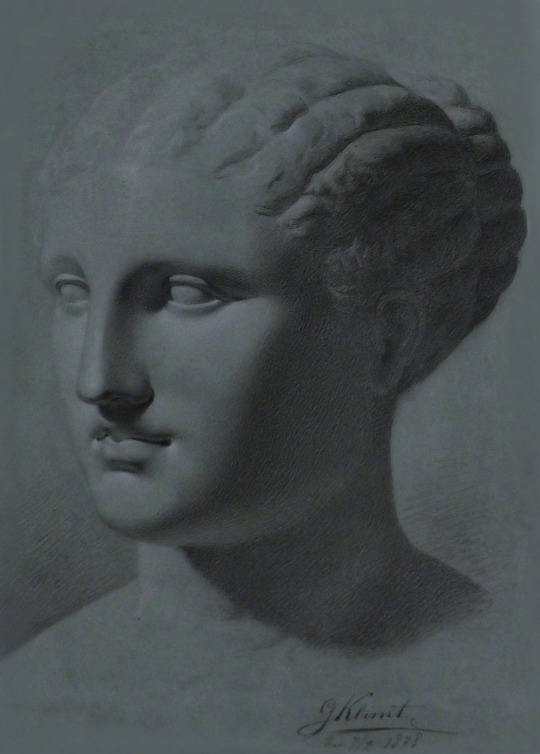#klimt's lehrer
Explore tagged Tumblr posts
Photo

Gustav KLIMT (1862-1918) “Porträt Klara Klimt” (um 1880) (Schwester des Künstlers) Öl auf Leinwand “Portrait Klara Klimt” (ca. 1880) (the artist’s sister) Oil on canvas Leihgabe ARGE Sammlung Gustav Klimt Dauerleihgabe im Leopold Museum Loan from ARGE Collection Gustav Klimt Permanent loan at Leopold Museum Ausstellung / Exhibition “KLIMTS LEHRER” Jahre an der Kunstgewerbeschule “TEACHING KLIMT” Studies at the School of Arts and Crafts MAK WIEN / VIENNA - 2021/22
#gustav klimt#vienna 1900#wien 1900#mak vienna#teaching klimt#klimt's lehrer#vienna secession#wiener secession#jugendstil#mak#vienna#wien
66 notes
·
View notes
Link
Review of a new biography, by Cate Haste, on the racy, intellectual jewel of Vienna, Alma Mahler Gropius Werfel, writer of Lieder, lover of the leading creative geniuses of Europe in the first half of the 20th century (including the painter Kokoschka), and beyond.
#Alma Mahler#Air Mail#Tom Lehrer#Lider#Gustav Mahler#Franz Werfel#Gustav Klimt#oskar kokoschka#walter gropius#bauhaus#Liesl Schillinger
0 notes
Photo

Gustav KLIMT (1862-1918) “Kopfstudie nach einem Gipsmodell im Dreiviertelprofil” Wien, 1878 - Kreide
“Head study based on a plaster model in three-quarter profile” Wien, 1878 - Chalk Leihgabe Universität für angewandte Kunst Wien, Kunstsammlung und Archiv Loan from University of Applied Arts Vienna, Collection and Archive
Ausstellung / Exhibition “KLIMTS LEHRER” Jahre an der Kunstgewerbeschule “TEACHING KLIMT” Studies at the School of Arts and Crafts MAK WIEN / VIENNA - 2021/22
#gustav klimt#vienna 1900#wien 1900#mak vienna#teaching klimt#klimt's lehrer#klimt#headstudy#vienna secession#wiener secession#jugendstil#mak#vienna#wien
13 notes
·
View notes
Photo

Ernst KLIMT (1864-1892) - Gustav KLIMT (1862-1918) “Porträt eines Mädchens” (1882) Schwarze Kreide
“Portrait of a girl” (1882) Black Chalk Leihgabe / Loan from ALBERTINA Wien / Vienna
Ausstellung / Exhibition “KLIMTS LEHRER” Jahre an der Kunstgewerbeschule “TEACHING KLIMT” Studies at the School of Arts and Crafts MAK WIEN / VIENNA - 2021/22
#ernst klimt#gustav klimt#vienna 1900#wien 1900#albertina vienna#mak#vienna#wien#teaching klimt#klimt's lehrer#mak vienna#vienna secession#wiener secession#jugendstil#kunstgewerbeschule wien#klimt#portrait
10 notes
·
View notes
Text

Gustav KLIMT (1862-1918) "Serenade" (1882) Ausstellung / Exhibition “KLIMTS LEHRER” Jahre an der Kunstgewerbeschule “TEACHING KLIMT” Studies at the School of Arts and Crafts MAK WIEN / VIENNA - 2021/22
#gustav klimt#vienna 1900#wien 1900#vienna secession#wiener secession#jugendstil#klimt#serenade#mak vienna#mak wien#teaching klimt#klimt's lehrer#mak#vienna#wien
13 notes
·
View notes
Text

Gustav KLIMT (1862-1918) “Die Reiche der Natur” aus Gerlach & Schenk "Allegorien und Embleme", Nr. 39 (1882) Autotypie Leihgabe Sammlung OR Wien "The Realms of Nature" from Gerlach & Schenk "Allegories and Emblems", no. 39 (1882) Autotype Loan from OR Collection Vienna Ausstellung / Exhibition “KLIMTS LEHRER” Jahre an der Kunstgewerbeschule “TEACHING KLIMT” Studies at the School of Arts and Crafts MAK WIEN / VIENNA - 2021/22
#gustav klimt#vienna 1900#wien 1900#mak vienna#teaching klimt#klimt's lehrer#vienna secession#wiener secession#jugenstil#mak#vienna#wien
8 notes
·
View notes
Photo

Carl RAHL (1812-1865) “Porträt Rudolf Eitelberger von Edelberg” (zugeschrieben) Wien um 1850 - Öl auf Leinwand
“Portrait Rudolf Eitelberger von Edelberg” (attributed) Vienna ca. 1878 - Oil on canvas
Ausstellung / Exhibition “KLIMTS LEHRER” Jahre an der Kunstgewerbeschule “TEACHING KLIMT” Studies at the School of Arts and Crafts MAK WIEN / VIENNA - 2021/22
#carl rahl#rudolf eitelberger#vienna 1900#wien 1900#mak vienna#teaching klimt#klimt's lehrer#portrait#vienna secession#wiener secession#jugendstil#mak#vienna#wien
5 notes
·
View notes
Photo

Ferdinand LAUFBERGER (1829-1881) “Das Blinde-Kuh-Spiel” (1865) “Blind Man’s Buff” (1865) Öl auf Leinwand / Oil on canvas Ausstellung / Exhibition “KLIMTS LEHRER” Jahre an der Kunstgewerbeschule “TEACHING KLIMT” Studies at the School of Arts and Crafts MAK WIEN / VIENNA - 2021/22
#ferdinand laufberger#gustav klimt#erich klimt#vienna 1900#wien 1900#mak#mak vienna#teaching klimt#klimt's lehrer#mak wien#laufberger#blind man's buff#blinde kuh spiel
4 notes
·
View notes
Text

Ferdinand LAUFBERGER (1829-1881) "Porträt eines Mädchens" / "Portrait of a girl" (1880) Kreide, weiß gehöht / Chalk heightened with white ALBERTINA WIEN / VIENNA Ausstellung / Exhibition "KLIMTS LEHRER" Jahre an der Kunstgewerbeschule "TEACHING KLIMT" Studies at the School of Arts and Crafts MAK WIEN / VIENNA - 2021/22
#ferdinand laufberger#gustav klimt#vienna 1900#wien 1900#mak#mak vienna#klimts lehrer#teaching klimt#laufberger#bildnis eines mädchens#portrait of a girl#albertina vienna#albertina wien#museum of applied arts vienna#ernst klimt#franz matsch
17 notes
·
View notes
Text

Ferdinand LAUFBERGER (1829-1881) “Entwurf für das Mosaik von Christus als Pantokrator am Grabmahl von Valentin Teirich” (1876) “Design for the mosaic of Christ as Pantocrator on the tomb of Valentin Teirich” (1876) Öl auf Leinwand / Oil on canvas Leihgabe Universität für angewandte Kunst Wien, Kunstsammlung und Archiv Loan from University of Applied Arts Vienna, Collection and Archive Ausstellung / Exhibition “KLIMTS LEHRER” Jahre an der Kunstgewerbeschule “TEACHING KLIMT” Studies at the School of Arts and Crafts MAK WIEN / VIENNA - 2021/22
#ferdinand laufberger#gustav klimt#erich klimt#vienna 1900#wien 1900#mak#mak vienna#mak wien#laufberger#klimts lehrer#teaching klimt#christ#christus#universität für angewandte kunst#university of applied arts
3 notes
·
View notes